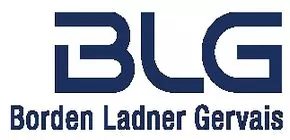- within Family and Matrimonial topic(s)
- with Senior Company Executives, HR and Finance and Tax Executives
- with readers working within the Banking & Credit, Insurance and Healthcare industries
![]() and
Beverley Moore
and
Beverley Moore ![]()
Amendment to Add Defence of Patent
Infringement Denied
Apotex Inc. v. Shire Canada inc.Drug: ALERTEC modafinil
This is an appeal of an Order of the Case Management Prothonotary, denying leave to Shire to amend its Statement of Defence to plead infringement as a Defence and Counterclaim. The Court considered the appropriate standard of review and concluded that the decision should be reviewed de novo because the proposed amendment adds a new defence and is therefore a question vital to the final issue in the case.
The Court noted that Shire had a heavier burden in respect of making this amendment as it would lead to a radical change in the nature of the questions to be considered. The Court concluded that the proposed amendment would lead to significant delays and the inability to have the action dealt with expeditiously, which could not be remedied with costs. Accordingly the Court refused leave. The Court noted that Shire should have brought the issue of infringement forward in its initial pleadings.
Costs Awarded In Patent Infringement and
Competition Act Claim
Drug: cefaclor
The Court considered the calculation of costs and disbursements in an action relating to patent infringement and a counterclaim based on an alleged breach of the Competition Act. The Court was primarily considering the effect of various settlement offers on the amounts to be paid by Apotex to Eli Lilly and Shionogi.
The Court first considered the appropriate quantum of costs and disbursements in respect of the Competition Act counterclaim. The Court noted that the Federal Courts Rules require that an offer only needs to remain open until the start of the trial or hearing at issue to impact the quantum of costs, and not until judgment or until a matter is taken under advisement. The Court then determined the appropriate amount to be paid by Apotex to Eli Lilly and Shionogi.
With respect to the costs and disbursements in the main action, namely the patent infringement action, the Court again considered the effect of various settlement offers. The Court only assessed the amount to be paid by Apotex to
Eli Lilly until the date of the settlement offer, indicating that it is necessary for the Court to first assess the quantum of damages to be paid to Eli Lilly before the effect of the settlement to offer can be properly determined
Motion to Reopen Trial to Introduce
New Evidence Denied
This is a motion by the Defendants, seeking to reopen the trial. A previous motion to reopen the trial was granted. In the within motion, the Defendants sought to reopen the trial in order to introduce a letter, the contents of which directly contradicts some of the testimony at trial. The Court held that the letter was publicly available prior to the date of the trial and the Defendants did not meet the test for due diligence.
Further, there were arguments raised by the Plaintiffs regarding the correct date of the letter. Accordingly, the Court found that it was not convinced that the evidence would change or could have an influence on the result and dismissed the motion.
OTHER CASES OF INTEREST
Supreme Court of Canada Finds Hyperlinks do not Publish Defamatory Material
The issue in this case relates to whether hyperlinks that connect to allegedly defamatory material meet the publication requirement for a finding of defamation.
The Plaintiff sued the Defendant, who operates a website on which he posted an article called "Free Speech in Canada", The article contained hyperlinks to other websites that contained allegedly defamatory information about the Plaintiff.
All the Justices concurred in the ultimate finding in the case that publication was not proved by the Plaintiff. However, three sets of reasons were provided.
The majority of the Supreme Court of Canada found that a hyperlink, by itself, should never be seen as "publication" of the allegedly defamatory material. The Court found that hyperlinks are similar to footnotes or references in an article and it remains the actual creator of the defamatory words who publishes the words.
The Supreme Court held that hyperlinking may result in a finding of publication in the event that the hyperlinkers actually express something defamatory.
Two of the Justices of the Supreme Court proposed a different formulation of the test for publication, stating that a hyperlink should constitute publication if, when read contextually, the text that includes the hyperlink results in the adoption or endorsement of the specific content to which it links. One Justice concurred in the ultimate decision of the Court, finding that publication was not proved, but suggested that the test should be whether the defamatory information is readily available to a third party as a result of the hyperlink. It was held that, in this case, the Defendant did make the defamatory information readily available, but the Plaintiff did not prove that third parties received the information.
About BLGThe content of this article is intended to provide a general guide to the subject matter. Specialist advice should be sought about your specific circumstances.

